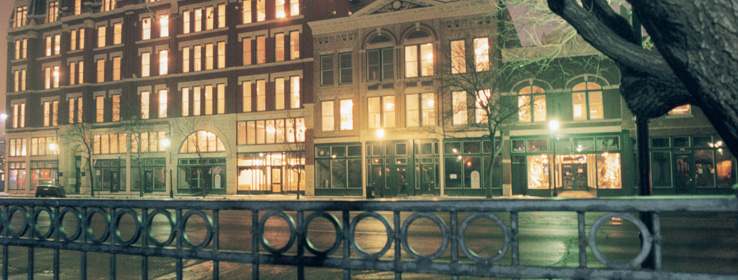New York City's Solaire project proves that high-density housing can be easy on the environment.
One of the first families to sign a lease at the Solaire, the nation's first "green" residential high-rise, included a child who suffered from allergies and respiratory problems.
Before moving in, the 7-year-old had never slept through the night. Now she sleeps soundly.
"That's due to the indoor air quality," says Julie Gross Gelfand, vice president and director of public relations for HLD/Blankman Public Relations, which represents the Albanese Organization, developer of the Solaire. "It's like a magic bullet."
Healthy indoor air quality – achieved through a state-of-the art filtration system that removes 85 percent of particulates and provides each of the building's 293 units with fresh filtered air – is just one of many environmentally responsible aspects that have earned the Solaire international acclaim, not to mention Gold LEED (Leadership in Energy and Environmental Design) certification from the U.S. Green Building Council.
An on-site wastewater treatment system – the first in the nation built inside a multifamily residential building – recycles black water (from toilets and shower and sink drains). Together with a storm-water reuse system and various additional conservation strategies, it ensures that the 27-story Solaire uses half the water of a typical residential building its size. And solar panels built into the Solaire's exterior walls, as well as energy-efficient windows, lighting and appliances, reduce the building's energy consumption by 35 percent.
"The Solaire symbolizes what can be accomplished with a commitment to utilizing readily available technologies and materials to create a healthy living environment," says Russell C. Albanese, president of the Albanese Organization, which teamed with design architects Clarke Pelli and a wide range of experts to complete the project.
First in a "Green" Series
Overlooking the Hudson River on Lower Manhattan's west side, the Solaire is the first of eight buildings to be constructed in Battery Park City in accordance with the "green guidelines" and Green Building Tax Credit program initiated by Gov. George Pataki in 2000. Since a green residential tower had never before been attempted in the United States, much of the process was "learn as you go," says Tim Button, a principal at Manhattan-based Stedila Design, which oversaw the building's interior design.
"Choosing the materials was where the green standards most came into play for us," says Button. "We had two filters we ran everything through: Was the material healthy for people to live with? And was it a renewable resource?"
In appointing the Solaire's apartments, Button chose natural and high-end materials, including solid cherry kitchen cabinets, slate kitchen floors, granite countertops, marble bathrooms and maple floors. Durability was key, given that the Solaire is home to a significant number of families.
Button chose Sherwin-Williams' Harmony® Interior Latex (in a flat finish in the bedrooms and living rooms, Eg-Shel finish in the bathrooms and kitchen) because Harmony emits no VOCs. (He was familiar with Harmony because his children have allergies and he researched low- or no-VOC paints for his own home.) For the trim and doors, Sherwin-Williams' Manhattan sales representative Herman Stubblefield recommended ProClassic Waterborne semi-gloss, which "achieves a finish similar to an oil-based paint but with a low-VOC content," he says.
Light Where It Counts
"For the walls, we limited our color choices to a fairly light palette," says Button. Rather than relying on wall color to provide visual interest, he brought color into the apartments through the "nonpaint" elements: furniture, flooring, cabinetry and even nature. "The color change that the windows offer – especially with the setting sun coming through the west-facing apartments – is spectacular," says Button, who adds that there are no windows in the apartments' hallways. "That seems counterintuitive, but we didn't want to waste the natural light – not to mention the energy loss – in spaces that didn't matter. We put it all where people live."
The fact that the Solaire was fully occupied within six months of completion, at rents averaging 4 to 5 percent higher than those for equivalent buildings, has made it a case study for sustainable urban living. Since its completion, another green residential tower, the Verdesian, also an Albanese project, has risen next door, and one more is in the works nearby.
"You take the whole package at the Solaire – the service, the design, the outstanding setting – and then you add the green living aspects, and you say, 'Wow!'" says Gelfand.
Going Green
Use Interior finishes with no or low VOCs.
Buy recycled carpeting – or abandon carpeting and rugs altogether to minimize allergens.
Upholster with natural textiles such as organic cotton, hemp or linen. Look for material that's been colored with vegetable (instead of chemical) dyes.
Buy locally to reduce resources used in transportation.
Ask for manufacturers' environmental impact statements.
Tips from designer Tim Button of Stedila Design







